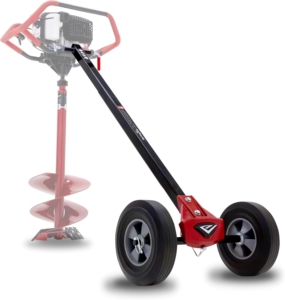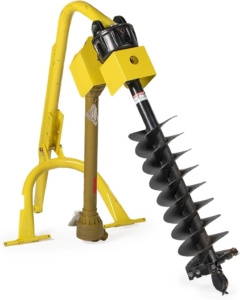Soil Boring: A Critical Process for Determining Bearing Material for Construction Projects
Soil boring is an essential process in geotechnical engineering that involves drilling into the earth’s surface to collect soil samples for testing. This process helps determine the type of bearing material beneath the surface and is crucial for understanding the foundational characteristics of a site. The data gathered from soil boring investigations plays a pivotal role in the design and construction of buildings, bridges, roads, and other infrastructure projects, ensuring their safety and stability. In this article, we will discuss why soil boring is required, how it is performed, and the equipment used in the process.
Why Soil Boring is Required
Soil boring is primarily conducted to determine the type, composition, and properties of the soil layers at different depths beneath the ground. This information is critical for several reasons:
- Foundation Design: The most important reason for soil boring is to assess the suitability of the soil for supporting a structure. Engineers need to determine the type of bearing material (such as rock, clay, gravel, or sand) at different depths, as the bearing capacity of the soil dictates the design of the foundation. If the soil is too soft or unstable, a deeper or more complex foundation system might be required.
- Identification of Soil Layers: Soil often consists of various layers with different properties (strength, moisture content, compaction, etc.). By conducting soil boring, engineers can identify these layers and assess their suitability for supporting the load of a building.
- Groundwater Table Assessment: Soil boring also helps identify the level of the water table. High groundwater levels can affect the design of foundations and drainage systems. For example, waterlogged soil may not provide adequate bearing strength, requiring special design solutions.
- Soil Compaction and Stability: In areas with loose or unstable soil, soil boring tests can reveal potential risks, such as soil settlement or landslides. This allows engineers to take appropriate measures to mitigate these risks and ensure the stability of the structure over time.
- Environmental and Structural Safety: Understanding the geotechnical properties of the soil helps predict how the foundation will respond to various factors such as seismic activity, soil erosion, and other environmental conditions. Accurate data from soil boring tests can ensure the long-term safety and durability of the structure.
How Soil Boring is Performed
Soil boring is a step-by-step process that involves drilling into the ground, retrieving soil samples, and conducting tests on the samples to evaluate their properties. The process is typically carried out in the following steps:
- Site Survey: Before beginning the boring process, a site survey is conducted to determine the best locations for soil boring. The number and placement of boreholes depend on the size of the project and the variability of the soil. In some cases, several boreholes are drilled at different locations to ensure that a comprehensive picture of the subsurface conditions is obtained.
- Drilling: Once the locations are determined, drilling begins. A drill rig is used to bore a hole into the ground to the required depth, which can range from a few feet to several hundred feet, depending on the scope of the investigation. Drilling is done in a vertical direction, but in some cases, angled boreholes may be needed to investigate specific areas.
- Soil Sample Retrieval: As the drill advances, soil samples are retrieved from different depths. The process involves either continuous sampling, where the soil is collected in an uninterrupted fashion, or discrete sampling, where samples are taken at specific intervals. The retrieved samples are typically placed in containers and preserved for testing.
- Field Testing: Sometimes, field tests are performed during the boring process, such as Standard Penetration Tests (SPT), which measure the resistance of the soil to penetration. These tests help assess the soil’s density, strength, and compaction.
- Laboratory Testing: After the samples are retrieved, they are sent to a laboratory for further analysis. In the laboratory, various tests are performed to determine the soil’s mechanical properties, including grain size distribution, moisture content, Atterberg limits (for clay), and compaction characteristics. These tests help assess the soil’s ability to bear weight and support structures.
- Analysis and Report: Once the tests are complete, the data is analyzed to determine the soil’s bearing capacity and suitability for the planned construction. A detailed report is produced, providing recommendations for foundation design based on the geotechnical findings.
Equipment Required for Soil Boring
The process of soil boring requires a variety of specialized equipment to ensure accurate and efficient data collection. Some of the most commonly used tools and equipment include:
- Drilling Rig: The drilling rig is the primary piece of equipment used to bore holes into the ground. It consists of a motorized rig, a drill stem, and drill bits. The rig may be mounted on a truck for mobility or be a stationary type for larger, more complex projects.
- Rotary Drills: Rotary drilling machines are often used for deep boreholes. These drills rotate the drill bit to break through the soil, and are ideal for hard or dense soils like clay and rock. They are often employed in situations where high precision is required.
- Augers: Auger drills are simpler tools used for shallow soil boring. They consist of a helical screw that pulls soil to the surface. Augers are suitable for soft or loose soil but are not effective for dense or rocky layers.
- Percussion Drills: These drills use a pounding action to break through tough soil layers. The repetitive impact forces soil particles to break apart, allowing for deeper penetration. Percussion drilling is commonly used in areas with very hard soil or rock layers.
- Soil Sampling Tubes: These are specially designed tubes used to collect soil samples as the drilling progresses. They are inserted into the ground at specific intervals and then extracted with the soil inside.
- Standard Penetration Test (SPT) Equipment: The SPT equipment includes a split spoon sampler, a hammer, and an anvil. It is used during the boring process to measure the resistance of the soil to penetration by the sampler. The results help determine the soil’s density and compaction.
- Geotechnical Laboratory Equipment: Once the samples are retrieved, laboratory tests such as sieve analysis, consolidation tests, and triaxial shear tests are performed to analyze soil properties. The lab equipment includes sieves, testing machines, and moisture content analyzers.
Conclusion
 Soil boring is a vital process in geotechnical engineering that provides essential data for determining the type of bearing material beneath the surface. It is crucial for designing safe and stable foundations for construction projects. The process involves drilling boreholes, collecting soil samples, and performing tests to analyze the soil’s mechanical properties. By understanding the bearing capacity of the soil, engineers can make informed decisions regarding foundation design and ensure the safety and longevity of the structures built upon it. The right equipment, including drilling rigs, augers, and sampling tubes, is necessary to perform soil boring efficiently and accurately.
Soil boring is a vital process in geotechnical engineering that provides essential data for determining the type of bearing material beneath the surface. It is crucial for designing safe and stable foundations for construction projects. The process involves drilling boreholes, collecting soil samples, and performing tests to analyze the soil’s mechanical properties. By understanding the bearing capacity of the soil, engineers can make informed decisions regarding foundation design and ensure the safety and longevity of the structures built upon it. The right equipment, including drilling rigs, augers, and sampling tubes, is necessary to perform soil boring efficiently and accurately.




 Our Construction company is Servicing Southeast Michigan, Detroit and the Tri-County area Wyane, Oakland and Macomb;
Our Construction company is Servicing Southeast Michigan, Detroit and the Tri-County area Wyane, Oakland and Macomb;

